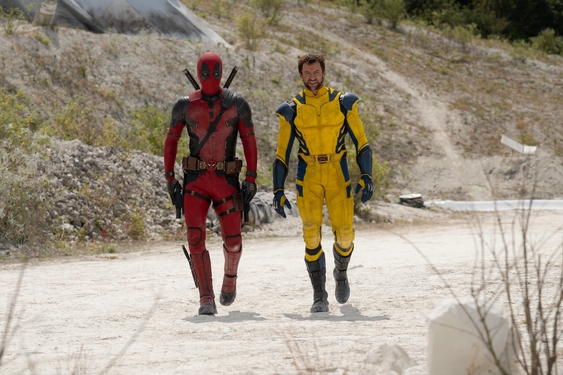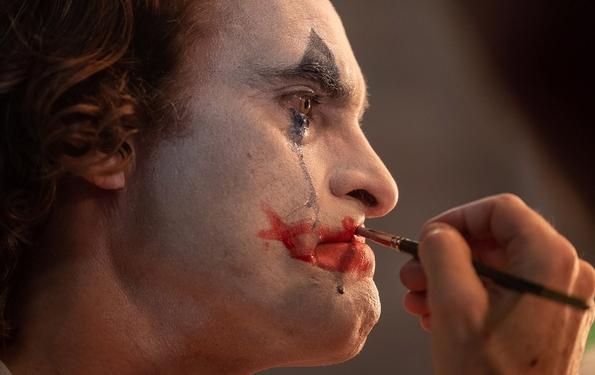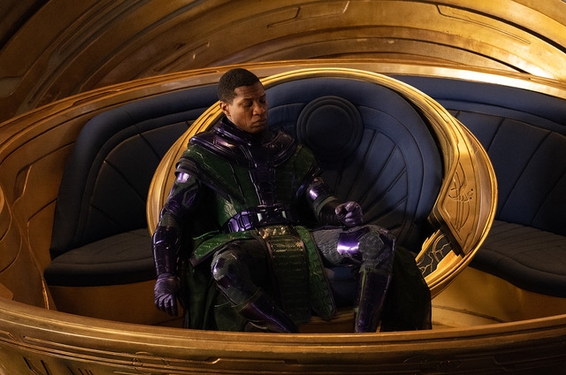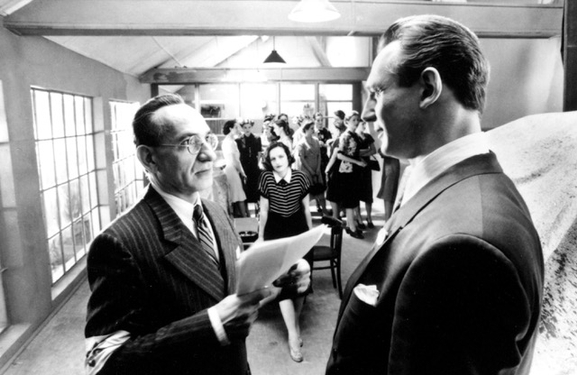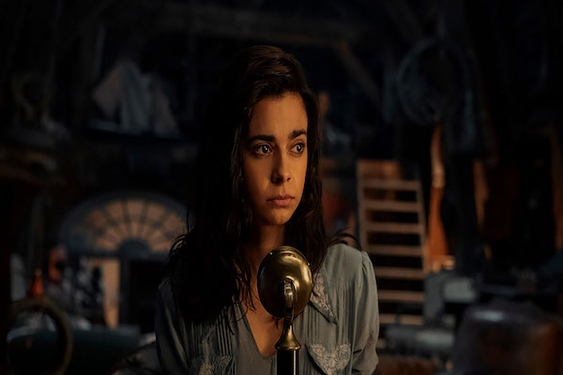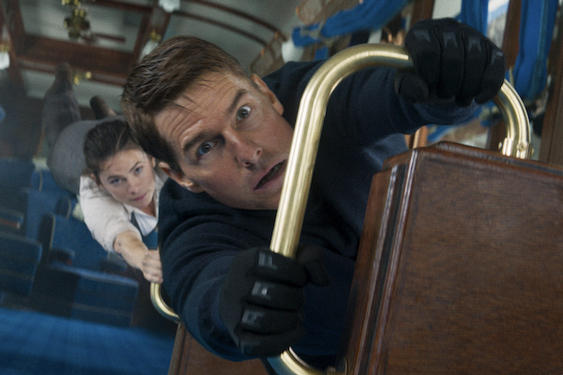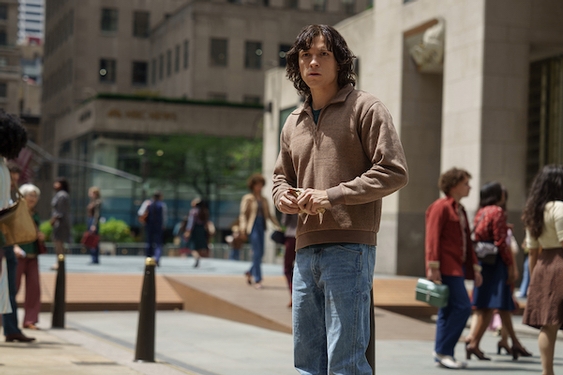With Star Wars: Episode III – Revenge of the Sith, his sprawling space opera comes to an end.
But Lucas’ influence goes much deeper than Luke Skywalker bed sheets. Long a champion of technical innovations, many of them developed for use in the Star Wars saga, he has profoundly influenced the way movies are made and enjoyed.
Lucas-inspired technology has made it possible for filmmakers to achieve effects thought impossible just a few years ago.
Here’s a look at his behind-the-screen accomplishments.
MOVIE SOUND
Even as the original Star Wars was setting box-office records, Lucas was expressing
his dissatisfaction with typical movie theater sound systems.
Lucas developed the THX Sound System (named after the central character in his first feature, THX-1138) in 1982 during production of Return of the Jedi because he wanted to reproduce sound exactly as it was recorded by the filmmaker.
To get THX certification theaters must meet criteria for background noise (the sounds generated by projectors and exhaust fans must be damped down), reverberation and sound isolation within the auditorium, speaker placement that allows for precise tracking of sound across the screen, and increased highs and lows.
Originally designed for analog sound reproduction, THX systems were pioneers in the new technology of digital sound, earning such a reputation for excellence that many hard-core movie fans will go out of their way to hear a film in a THX auditorium.
THX has set the bar on movie sound so high that to compete even the smallest auditorium in a big megaplex must offer crisp, booming digital sound. It might have happened without George Lucas, but it wouldn’t have happened as quickly.
MOTION CONTROL TECHNOLOGY
In 1975 Lucas created a company called Industrial Light and Magic, or ILM , to
do the special effects for his movies (while also taking f/x jobs from other filmmakers).
He wanted the space battles in his upcoming Star Wars to have a sophistication
and realism never before seen on the screen.
So ILM developed motion control, a computer system that allowed technicians to orchestrate the interaction of cameras and model spaceships so they could move in specific and repeatable ways. Before motion control, a dozen or more model spaceships would have to be filmed in a single take.
With motion control, each spaceship could be shot individually. Then the different pieces of footage would be combined for the final effect. The computer "remembered" the spatial relationships of each model and the camera.
And it was good for more than just spaceships. In 1988’s Big Business, a comedy in which Lily Tomlin and Bette Midler were double-cast as two sets of identical twins, motion control allowed the creation of complex tracking shots in which all four characters interacted.
Motion control has since become the foundation of modern visual effects.
MOTION CAPTURE
Industrial Light and Magic pioneered the use of motion capture, a system used
to record movement from a variety of perspectives.
Actors wearing skintight outfits dotted with tiny sensors perform while surrounded by cameras that record their every movement. Based on the information supplied by the sensors, a realistic model of the actor is then created in the computer. It can be viewed from 360 degrees or from overhead.
The best-known use of this technology may be the character of Gollum in the Lord of the Rings movies. But it can also be used to multiply a single individual into a large crowd or army.
PROPRIETARY HARDWARE AND SOFTWARE
They may not be terribly glamorous, but the computer systems developed by ILM
have become standard tools of contemporary moviemakers.
ILM’s EditDroid was the first nonlinear editing system. This revolutionary development meant that film could be scanned onto tapes and/or laserdiscs (ILM also invented the scanning equipment) and then easily cut and recut without the editor having to touch the original film. In the time it used to take to create a scene using the old cut-and-paste method, an editor could now do three or four times the work.
SoundDroid did the same thing for sound editors, allowing them to build audioscapes on a computer from countless sources.
The EditDroid and SoundDroid technology was later sold to Avid, widely regarded as the industry leader in computer-based editing systems.
Other ILM-developed systems that have become industry standards are ViewPaint (used to paint color texture maps on 3D models) and Caricature (animation software that in 1998 won a technical Oscar).
And it should be noted that Lucas was the founder of the pioneering computer animation firm Pixar. He sold it to Steve Jobs in 1986.
HI-DEF AND THE VIRTUAL STUDIO
Lucas was the first major filmmaker to embrace digital video technology. Instead
of recording everything on film and then scanning it into a computer, footage
from the set was recorded directly on a hard drive or digital tape.
"Film ultimately is very cumbersome," Lucas told American Cinematographer magazine in a 2002 interview. "It’s like working with the lights out – you can’t see the work until the next day. Being able to look at what you’re doing while you’re doing it, without having to run to the lab or hurrying because you want to break down the setup and all that, makes hi-def a much more efficient way of shooting visual effects."
Lucas used his "Young Indiana Jones" TV series as a workshop for the new technology. In the 1994 film Radioland Murders (produced and with a story by Lucas), conventional film was blended with digitally created sequences. Here Lucas toyed with "virtual sets," backgrounds that didn’t exist in reality but could be created in the computer after the actors had been filmed.
The Phantom Menace (1999) blended images captured on film and video. But by the time of 2003’s Attack of the Clones Lucas was ready to deliver a 100 percent digital movie, one without a frame of conventional film.
Clones was noteworthy in that movie sets had become unnecessary. The only real things in front of the camera were the actors, their costumes and any props they touched. Performers spoke their lines against a green screen; their surroundings were digitally painted in later.
Lucas also is Hollywood’s most aggressive proponent of digital projection systems, having concluded that productions shot digitally look better when projected digitally.
This is the one battle in which Lucas has been unable to claim a victory. The cost of installing top-of-the-line digital projectors is about $100,000 per screen, and exhibitors have balked at shelling out that much money when the main beneficiaries of digital technology will be filmmakers and studios that will no longer have to make and ship expensive exhibition prints.
Still, even hard-core lovers of celluloid admit that digital is here to stay, with filmmakers like Robert Rodriguez (Spy Kids, Once Upon a Time in Mexico) turning out all-digital titles. It’s only a matter of time.
What’s really fascinating about Lucas’ march of technology is that it’s done more than make life easier for moviemakers and inspire the creation of ever-more-believable special effects.
Since the first Star Wars burst upon the scene in 1977, technology has become a driving force in movie content, taking its place beside (and often superseding) plot and character.
A studio executive contemplating giving the green light to a new project doesn’t just ask what the story’s about or who will star. He also wants to know about spectacular visuals, the special-effects money shots that, once seen in a movie trailer, will convince fans to plop down their money at the ticket booth.
Whether this is a good or bad thing for movie art is up to the individual filmgoer. What isn’t in doubt is that George Lucas has become the most important individual in the advancement of movie technology and, thanks to the trickle-down effect of his influence, on the types of movies we see at the multiplex.
© 2005, The Kansas City Star. Distributed by Knight Ridder/Tribune Information Services.




